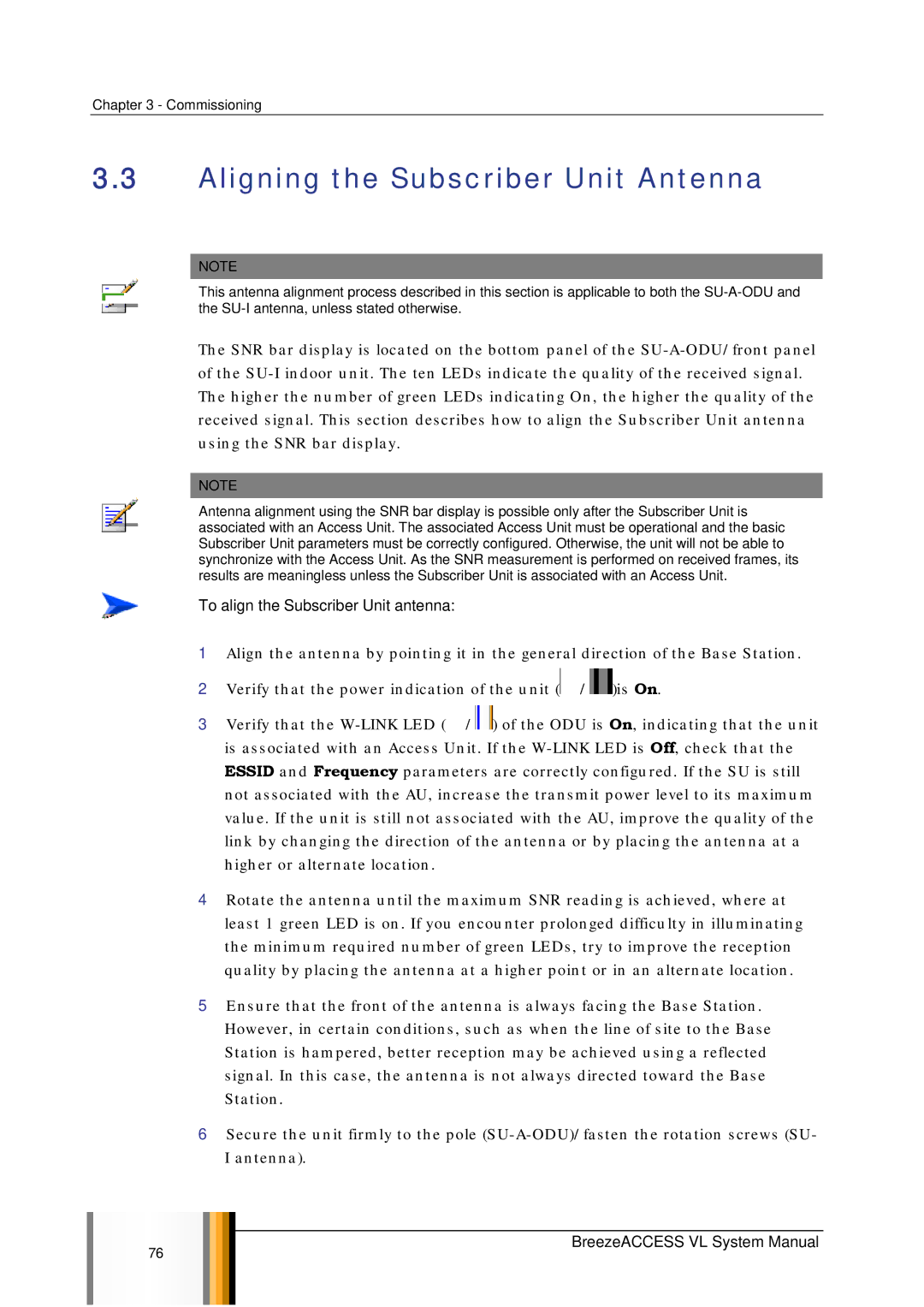
Chapter 3 - Commissioning
3.3Aligning the Subscriber Unit Antenna
NOTE
This antenna alignment process described in this section is applicable to both the
The SNR bar display is located on the bottom panel of the
NOTE
Antenna alignment using the SNR bar display is possible only after the Subscriber Unit is associated with an Access Unit. The associated Access Unit must be operational and the basic Subscriber Unit parameters must be correctly configured. Otherwise, the unit will not be able to synchronize with the Access Unit. As the SNR measurement is performed on received frames, its results are meaningless unless the Subscriber Unit is associated with an Access Unit.
To align the Subscriber Unit antenna:
1Align the antenna by pointing it in the general direction of the Base Station.
2Verify that the power indication of the unit (![]() /
/![]() )is On.
)is On.
3Verify that the ![]() /
/![]() ) of the ODU is On, indicating that the unit is associated with an Access Unit. If the
) of the ODU is On, indicating that the unit is associated with an Access Unit. If the
4Rotate the antenna until the maximum SNR reading is achieved, where at least 1 green LED is on. If you encounter prolonged difficulty in illuminating the minimum required number of green LEDs, try to improve the reception quality by placing the antenna at a higher point or in an alternate location.
5Ensure that the front of the antenna is always facing the Base Station. However, in certain conditions, such as when the line of site to the Base Station is hampered, better reception may be achieved using a reflected signal. In this case, the antenna is not always directed toward the Base Station.
6Secure the unit firmly to the pole
76
